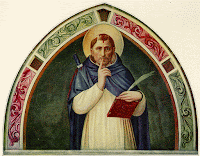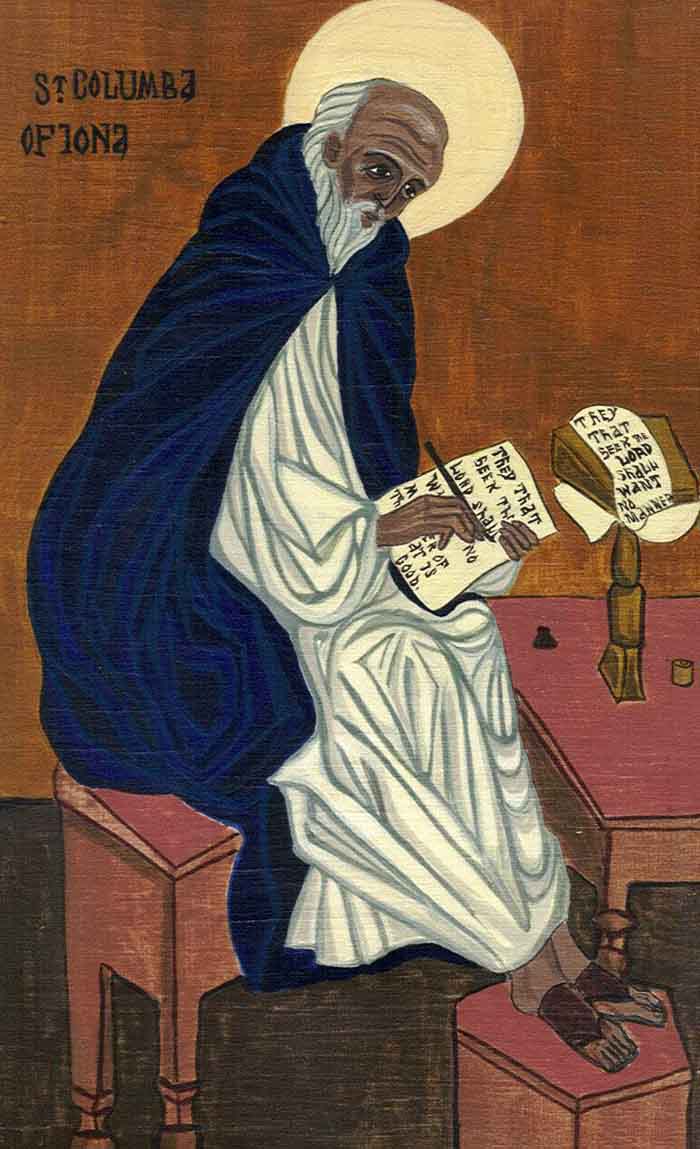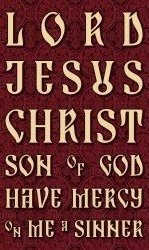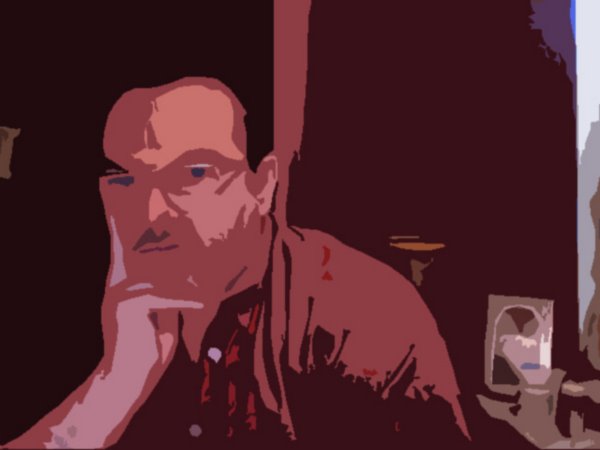The following is the extensive concluding passage of Benedict XVI's speech on December 22, 2005.
"IN THIS PROCESS OF CHANGE THROUGH CONTINUITY..."
by Benedict XVI
[...] The Council had to find a new definition of the relationship between the Church and the modern age. This relationship started out difficultly with the Galileo trial. It broke completely, when Kant defined “religion within pure reason” and when, in the radical phase of the French Revolution, an image of the state and of man was spread that practically intended to crowd out the Church and faith. The clash of the Church's faith with a radical liberalism and also with natural sciences that claimed to embrace, with its knowledge, the totality of reality to its outmost borders, stubbornly setting itself to make the “hypothesis of God” superfluous, had provoked in the 19th century under Pius IX, on the part of the Church, a harsh and radical condemnation of this spirit of the modern age. Thus, there were apparently no grounds for an positive and fruitful agreement, and drastic were also the refusals on the part of those who felt they were the representatives of the modern age.
However, in the meantime, the modern age also had its development. It was becoming clear that the American Revolution had offered a model of the modern state that was different from that theorized by the radical tendencies that had emerged from the second phase of the French Revolution. Natural sciences began, in a more and more clear way, to reflect their own limits, imposed by their own method which, though achieving great things, was nevertheless not able to comprehend the totality of reality.
Thus, both sides began to progressively open up to each other. In the period between the two world wars and even more after the second world war, Catholic statemen had shown that a modern lay state can exist, which nevertheless is not neutral with respect to values, but lives tapping into the great ethical fonts of Christianity. Catholic social doctrine, as it developed, had become an important model between radical liberalism and the Marxist theory of the state. Natural sciences, which would unreservedly profess to its own method in which God had no access, realized ever more clearly that this method was not comprehensive of the totality of reality and thus opened once again their doors to God, knowing that reality is greater than naturalistic method and what it can embrace.
It could be said that three tiers of questions were formed that now, at the hour of Vatican II, awaited a response.
First and foremost, it was necessary to define in a new way the relationship between faith and modern science; this regarded, however, not only natural sciences, but also historical sciences because, in a certain school, the historical-critical method claimed for itself the final words on the interpretation of the Bible and, demanding full exclusiveness for its understanding of Sacred Scriptures, it opposed, on important points, the interpretation that the faith of the Church had elaborated.
Secondly, it was necessary to define in a new way the relationship between the Church and the modern state, which made room to citizens of various religions and ideologies, acting impartially towards these religions and simply taking on the responsibility for the orderly and tolerant coexistence between citizens and for their freedom to exercise their religion.
To this, thirdly, was connected in a more general way the problem of religious tolerance – a question that called for a new definition of the relationship between Christian faith and religion in the world. In particular, in the face of the recent crimes of the National-Socialist regime and, in general, in a retrospective look on a long and difficult history, it was necessary to evaluate and define in a new way the relationship between the Church and the faith of Israel.
These are all important subjects – these great themes of the second part of the Council – uponwhich we cannot now dwell much here. It is clear that in all these sectors, which together are one problem, some discontinuities would emerge. Although this may not have been fully appreciated at first, the discontinuities that did emerge – notwithstanding distinct concrete historical situations and their needs – did prevent continuity at the level of principles.
The nature of true reform lies in this combination of multi-levelled continuity and discontinuity.
In this process of change through continuity we had to learn how to understand better than before that the Church’s decisions about contingent matters – for example, about actual forms of liberalism or liberal interpretations of the Bible – were necessarily themselves contingent because related to a reality itself changeable.
We had to learn how to recognise that in such decisions only principles express what is lasting, embedded in the background and determining the decision from within. The concrete forms these decisions take are not permanent but depend upon the historical situations. They can therefore change.
Thus, for example, with freedom of religion seen as expressing mankind’s inability to find truth, relativism becomes the canon. From being a social and historical necessity it is incorrectly elevated to a metaphysical level that loses its true meaning. It therefore becomes unacceptable to those who believe that mankind can reach the truth of God and, based on truth’s inner dignity, is related to such knowledge.
This is completely different from viewing freedom of religion as a necessity that human coexistence requires or even seeing it as an inherent consequence of the truth that such freedom cannot be imposed from the outside but must come from a conviction from within.
By adopting a decree on religious freedom, the Second Vatican Council recognised and made its own an essential principle of the modern state. And in doing so, it reconnected with the wider heritage of the Church.
The Church itself is conscious that it is fully in sync with the teachings of Jesus (cf Mt 22: 21), the Church of the early martyrs, and with all the martyrs. Although the early Church dutifully prayed for emperors and political leaders as a matter of fact (cf 1 Tm 2: 2), it refused to worship them and thus rejected the state religion. In dying for their faith in the one God revealed in Jesus Christ, the martyrs of the early Church also died on behalf of freedom of conscience and the freedom to profess one’s own religion. No state can impose any religion; instead, religion must be freely chosen with the grace of God and in freedom of conscience.
A missionary Church required to proclaim its message to all the nations must commit itself to freedom of religion. It must pass on the gift of truth that exists for all and at the same time reassure nations and governments that it does not want to destroy their identities and cultures. It must show that it brings an answer they intimately expect. This answer is not lost among the many cultures, but instead enhances unity among men and thus peace among nations.
By defining in a new way the relationship between the faith of the Church and some essential elements of modern thinking, the Second Vatican Council revised and even corrected some past decisions. But in an apparent discontinuity it has instead preserved and reinforced its intimate nature and true identity. The Church is One, Holy, Catholic, and Apostolic both before and after the Council, throughout time. It “presses forward amid the persecutions of the world and the consolations of God,” announcing the cross and death of the Lord until he comes (cf Lumen gentium, 8).
Yet those who expected that with this fundamental “Yes” to the modern age, all tensions would melt away, and that this “opening up to the world” would render everything harmonious, underestimated the inner tensions and contradictions of the modern age; they underestimated the internal tensions and the dangerous fragility of human nature, which have threatened man’s journey throughout all historical periods and configurations. Given man’s new power over himself and over matter, these dangers have not disappeared; instead, they have acquired a new dimension. We can clearly illustrate this by looking at current history.
In our time too, the Church remains a “sign of contradiction” (Lk 2: 34) and for this reason in 1976 pope John Paul II, then a cardinal, gave it as the title to the spiritual exercises he preached to Pope Paul VI and the Roman curia. The Council could not abolish this Gospel contradiction in the face of the dangers and errors of mankind. What it did do was put aside wrong or superfluous contradictions in order to present to our world the requirements of the Gospel in all its greatness and purity.
The steps that the Council took toward the modern age – which in a rather imprecise manner has been presented as an “opening up to the world” – belongs decisively among the perennial problems of the ever changing relationship between faith and reason.
Undoubtedly, the Council faced situations that existed before. In his first Epistle, saint Peter urged Christians to be ready to answer (apo-logia) anyone who asked them the logos, the reason for their faith (cf 3:15). This meant that biblical faith had to interact with and relate to Greek culture, learning how to recognise, by interpreting distinctions as well as through contact and affinity with the latter, the one God-given reason.
When Medieval Christianity, largely schooled in the Platonic tradition, came into contact with Aristotle’s ideas via Jewish and Arab philosophers in the 13th century, faith and reason almost became irreconcilable. But saint Thomas Aquinas was especially able to find a new synthesis between faith and Aristotelian philosophy. Faith could relate in a positive manner with the dominant notions of reason of the time.
The exacting disputes between modern reason and Christian faith, which started off on the wrong foot with Galileo’s trial, went through several phases. But by the time the Second Vatican Council was convened new thinking was possible. The new approach found in the conciliar papers sets out only guidelines but also the essential direction so that the dialogue between faith and reason, very important nowadays, has found its orientation in Vatican II.
This dialogue must now be developed with the open-mindedness, but also with that clarity in the discernment of spirits that the world rightly expects from us. We can look back with gratitude to the Second Vatican Council. If we read and accept it guided by a correct interpretation, it can become a great force in the ever necessary renewal of the Church. [...]
+Laus Deo!
















